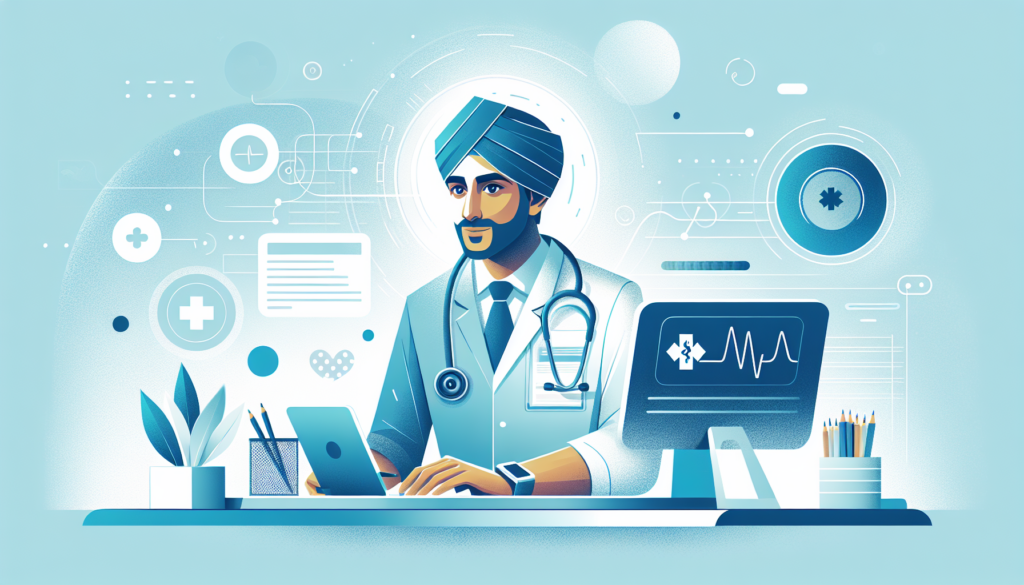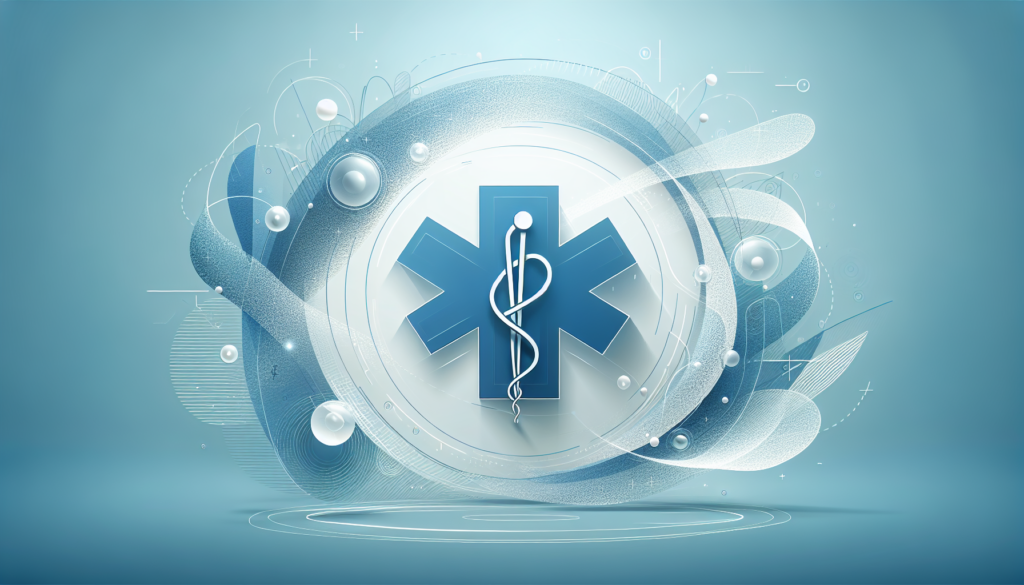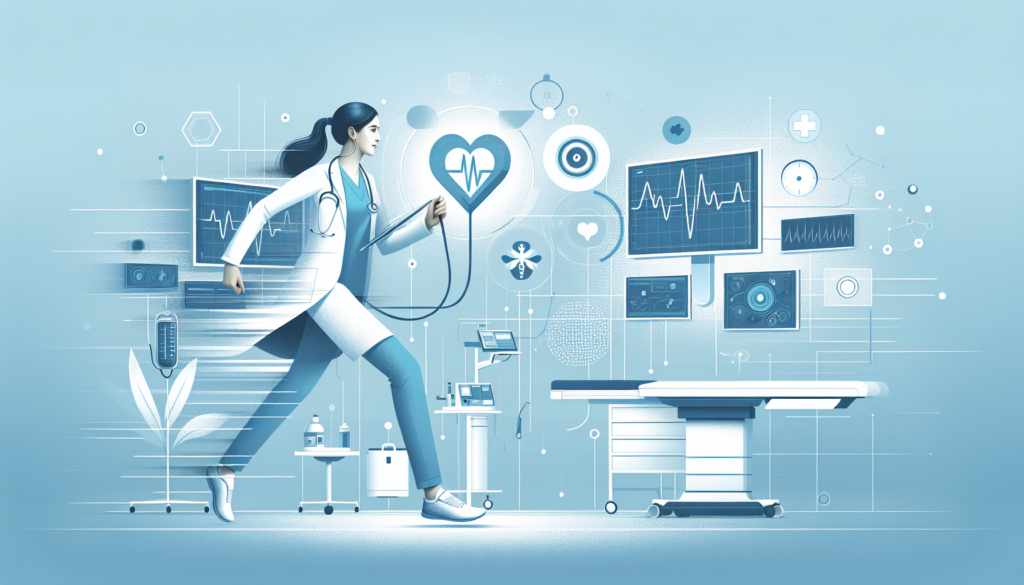Understanding Medical Transcription: A Guide for Beginners
The field of medical transcription is an essential component of the healthcare documentation process. It involves the transformation of voice-recorded reports as dictated by physicians or other healthcare professionals into text format. The importance of this process cannot be understated, as it ensures that patient encounters and treatment plans are accurately transcribed and integrated into medical records. These records play a crucial role in providing continuity of care, substantiating claims for medical services, and facilitating the sharing of information among the healthcare team.
At its core, medical transcription requires a detailed understanding of medical terminology, anatomy, physiology, diagnostics, and treatment procedures. Transcriptionists must also be adept in grammar and style to ensure the clarity and readability of medical documents. They may utilize transcription equipment, such as foot pedals and headsets, and rely on various software to play back and transcribe audio files. The transcribed documents then undergo a rigorous review process to verify their accuracy and compliance with legal and ethical standards.
In today’s technologically advanced world, speech recognition software is increasingly used to augment the transcription process. These sophisticated programs can convert spoken language into written text, allowing for a more streamlined workflow. However, the role of a medical transcriptionist remains critical, as they provide the necessary human oversight to catch nuances, errors, and inconsistencies that software alone may miss. It is this human element that maintains the high quality and reliability of medical records.
For beginners considering a career in medical transcription, it’s important to recognize the need for continuous education and adaptation. As medical science evolves and regulations change, transcriptionists must keep their knowledge current. Additionally, developing typing skills and gaining familiarity with electronic health record (EHR) systems will be beneficial. Due to the sensitive nature of the material, ethical standards and patient confidentiality are paramount, thus underlining the profession’s importance and the trust placed in its practitioners.
The Essential Skills Required for Medical Transcription
Medical transcriptionists play a critical role in the healthcare field, acting as a bridge between spoken medical dialogues and written records. This requires a set of highly specialized skills, each contributing to the accuracy and efficiency needed in medical documentation. Proficiency in language is paramount, as transcriptionists must have an exemplary grasp of medical terminology and grammar. Understanding complex medical jargon, abbreviations, and the nuances of language used in healthcare settings enables transcriptionists to produce clear and error-free documentation that is crucial for patient care and medical records.
Beyond linguistic expertise, medical transcriptionists must be adept at listening and concentration. With healthcare professionals speaking at various speeds, sometimes with heavy accents or in noisy environments, transcriptionists must be able to discern words correctly and transcribe them appropriately. Moreover, strong typing skills and familiarity with transcription equipment are essential to efficiently convert voice-recorded reports into written text with minimal delay.
- Expertise in Medical Terminology and Grammar
- Advanced Listening and Concentration Abilities
- Proficient Typing Skills and Equipment Handling
In the evolving landscape of healthcare, adaptability to technological advancements is also a must. Many transcriptionists work with sophisticated software and should possess the technical skills to navigate these platforms effectively. A comprehensive understanding of medical documentation software, voice recognition technology, and electronic health record (EHR) systems not only boosts productivity but also ensures that the transition from audio to written records is seamless. Equally important is the ability to maintain patient confidentiality and adhere to healthcare privacy laws, such as HIPAA in the United States, which governs the protection of personal health information.
Finally, attention to detail cannot be overstated in medical transcription. Transcriptionists must be vigilant to ensure that all transcribed reports are accurate and meticulously verified for inconsistencies or potential errors. This attention extends to proper punctuation, formatting, and editing to reflect the precise meaning of the spoken word. This meticulousness not only contributes to the integrity of the medical record but also to the safety and proper treatment of patients, highlighting the significant responsibility held by those in the profession.
- Technical Proficiency with Transcription Software
- Understanding of Privacy Laws and Confidentiality
- Unwavering Attention to Detail and Verification Processes
Step-by-Step Process: Getting Started with Medical Transcription
Entering the world of medical transcription can streamline a healthcare facility’s documentation process immeasurably, but knowing where to begin is crucial for seamless integration and effective use. The first step in harnessing the power of a digital scribe is to understand the needs of your particular medical practice. Gaining clear insight into the volume of patients, the specialty-specific terminologies involved, and the current workflow inefficiencies are all fundamental. Assessing these aspects will help tailor the transcription process to align perfectly with your operational goals. It’s about optimizing for efficiency without compromising the quality of patient care—a balance that is essential in any medical setting.
Once a detailed assessment has been conducted, the next step is to select a medical transcription solution that best fits these identified needs. Look for platforms that offer high accuracy rates, quick turnaround times, HIPAA compliance for patient confidentiality, and a track record of success with similar medical practices. Once a viable solution like Scribemd.ai is chosen, setting up the system is the next pivotal move. This usually involves installation, configuring settings to match your practice’s requirements, and a thorough testing phase to ensure that the software is performing as expected in the live environment of patient encounters.
- Determine the needs of the medical practice: Assess patient volume, terminologies, and workflow inefficiencies.
- Select a transcription solution: Look for accuracy, speed, compliance, and a good fit for your practice’s needs.
- System installation and configuration: Tailor settings to your requirements and test thoroughly.
Training the staff is another critical step in the implementation process. Employees must be proficient in using the transcription software to reap maximum benefits. This often entails organized workshops, tutorials, and hands-on sessions to ensure that all team members are comfortable with the new technology. Support and continuous education are pivotal, as they mitigate resistance to change and smooth out any learning curves associated with the adoption of innovative solutions. Comprehensive training empowers staff members to efficiently interact with the ai-powered digital scribe, increasing the speed and accuracy of capturing patient encounters and thereby enhancing overall productivity.
- Conduct thorough staff training: Engage in tutorials and hands-on sessions for competence in the new system.
- Ensure ongoing support and education: Provide continuous learning opportunities to help staff adapt to the AI transcription technology.
- Improve efficiency and productivity: Leverage staff proficiency to optimize patient encounter documentation.
Finally, it’s essential to continually assess and refine the implementation of your medical transcription process. Solicit feedback from the staff who use the system daily to identify any challenges or areas for improvement. Making adjustments and updates based on real-world usage will ensure the transcription service remains responsive and supportive of your medical practice’s evolving needs. Ongoing evaluation and adjustments will guarantee that the solution not only maintains its relevance and utility, but also grows with your practice as a dependable, efficient, and invaluable tool in your healthcare delivery arsenal.
| Step | Action Items |
|---|---|
| Assessment of Needs | Understand practice specifics, including patient volume and workflow. |
| Selection of Solution | Choose transcription platform that aligns with your practice needs. |
| Installation and Configuration | Set up and tailor the system to your practice; conduct initial testing. |
| Staff Training | Provide comprehensive training and support for ease of system adoption. |
| Ongoing Assessment | Regularly evaluate and refine the software’s use for sustained effectiveness. |
Utilizing Technology: How AI is Transforming Medical Transcription
The realm of medical transcription is undergoing an unprecedented transformation thanks to the integration of Artificial Intelligence (AI). Traditional methods of medical transcription involved manual typing of notes taken during patient visits or dictations, a time-consuming process susceptible to human error. The advent of AI is reinventing this task, promising a blend of efficiency and accuracy previously unattainable. Cutting-edge AI technology, such as that harnessed by ScribeMD, is capable of interpreting natural language, understanding medical terminologies, and generating accurate medical notes swiftly. This automation of medical note-taking not only optimizes the workflow for healthcare providers but also enhances the quality of medical documentation.
AI in medical transcription specifically targets the pain points of documentation – the time spent typing up notes and the potential for inaccuracies. With the integration of advanced learning algorithms, AI-powered digital scribes can listen to conversations in real time and translate them into structured medical reports. This technology is continuously improving with ongoing advancements in machine learning, which enable it to better understand context, nuances, and complex medical jargon. The result is a significant decrease in the administrative load on medical professionals, freeing them to concentrate on patient care – a prime objective in healthcare.
- Traditional Transcription vs AI Transcription: AI eliminates manual typing and increases documentation accuracy.
- Real-time Documentation: AI captures physician-patient interactions as they happen, ensuring immediate availability of medical notes.
- Understanding of Medical Terminology: Through machine learning, AI systems are frequently updated to understand the latest medical terms and phrases.
Furthermore, AI is particularly adept at adapting to the various speech patterns and accents of medical professionals, ensuring a wide-ranging usability of the technology. This adaptability introduces a level of personalization and flexibility to medical transcription that was previously challenging to achieve. Notably, AI technologies adhere to stringent privacy and compliance standards such as HIPAA in the United States, making them viable for handling sensitive medical information. The sophistication of these systems also means that they can integrate seamlessly with existing Electronic Health Records (EHR) systems, contributing to a cohesive and interconnected digital healthcare infrastructure.
Lastly, a key benefit that AI brings to medical transcription is the sizable reduction in turnover time for documentation. Rapid response times mean that transcribed notes are available for review and follow-up in a fraction of the time it used to take, leading to a more efficient patient care cycle. This heightened promptness not only benefits patient management but also substantially diminishes the backlog of paperwork that can accumulate in a busy medical practice. As the technology continues to advance, the convergence of AI with medical transcription stands as a shining example of how innovation can streamline healthcare processes and elevate the standards of patient treatment.
- Speech Recognition: AI systems are designed to comprehend diverse speech patterns and accents.
- Compliance and Privacy: AI transcription tools maintain high security and privacy standards, including HIPAA compliance.
- Integration with EHR: AI transcription aligns with existing digital healthcare infrastructures for improved consistency.
- Increased Turnaround Speed: Documentation is prepared more quickly, enhancing the overall healthcare delivery system.
Navigating Challenges and Building a Career in Medical Transcription
The path to establishing oneself in the field of medical transcription is paved with a blend of challenges and opportunities. Medical transcriptionists must navigate through an array of complex medical terminologies, understand various accents and dictations, and maintain a stringent level of accuracy to thrive in their profession. Ensuring a profound knowledge of anatomy, physiology, and the various medical procedures is critical for accurate transcription. In addition to the intellectual demands, they must be adept at using transcription software and managing the discrepancies that can arise from voice recognition technologies.
To build a successful career in medical transcription, professionals must exhibit an unwavering commitment to continued learning and professional development. As medicine and technology evolve, transcriptionists should stay updated with the latest trends and changes in healthcare documentation. The transition from traditional transcription to innovative solutions like AI-powered digital scribes also requires adaptability and a wiliness to embrace new methodologies. With the increasing adoption of these advanced technologies, proficiency in these areas can become a significant competitive advantage in the workforce.
- Acquire a solid foundation in medical terminology and anatomy.
- Develop proficiency in transcription technology and software.
- Stay up-to-date with industry trends and technological advancements.
- Adapt to new transcription methodologies, such as AI scribing solutions.
As professionals navigate the industry, they face the paramount task of ensuring patient privacy and adhering to changes in healthcare regulations, such as HIPAA (Health Insurance Portability and Accountability Act) in the United States. The meticulous attention to detail and a strong ethical code are indispensable qualities in this line of work. Moreover, the ability to efficiently manage time and prioritize tasks directly correlates with success, as the job often requires handling a substantial volume of dictations under tight deadlines.



